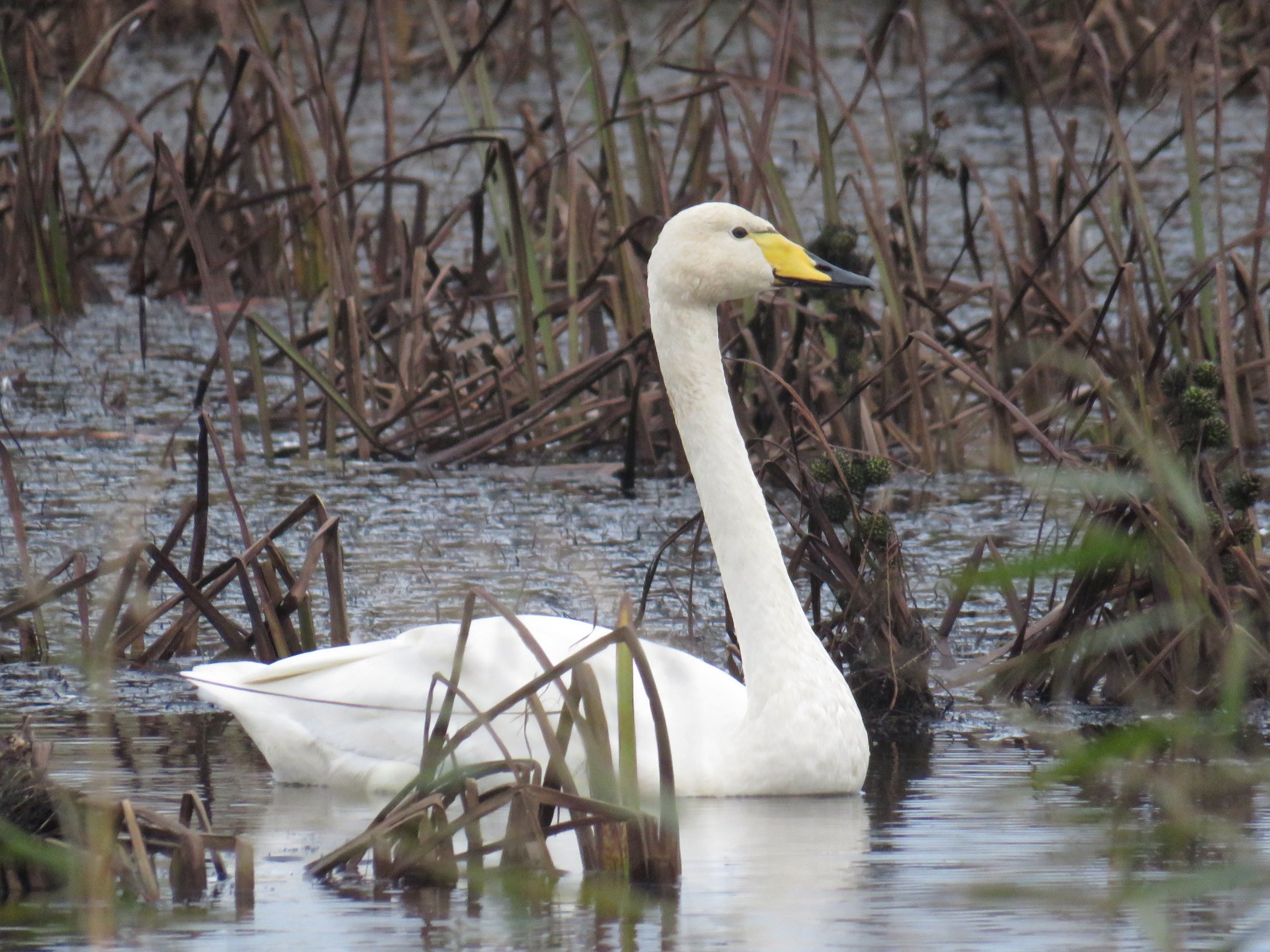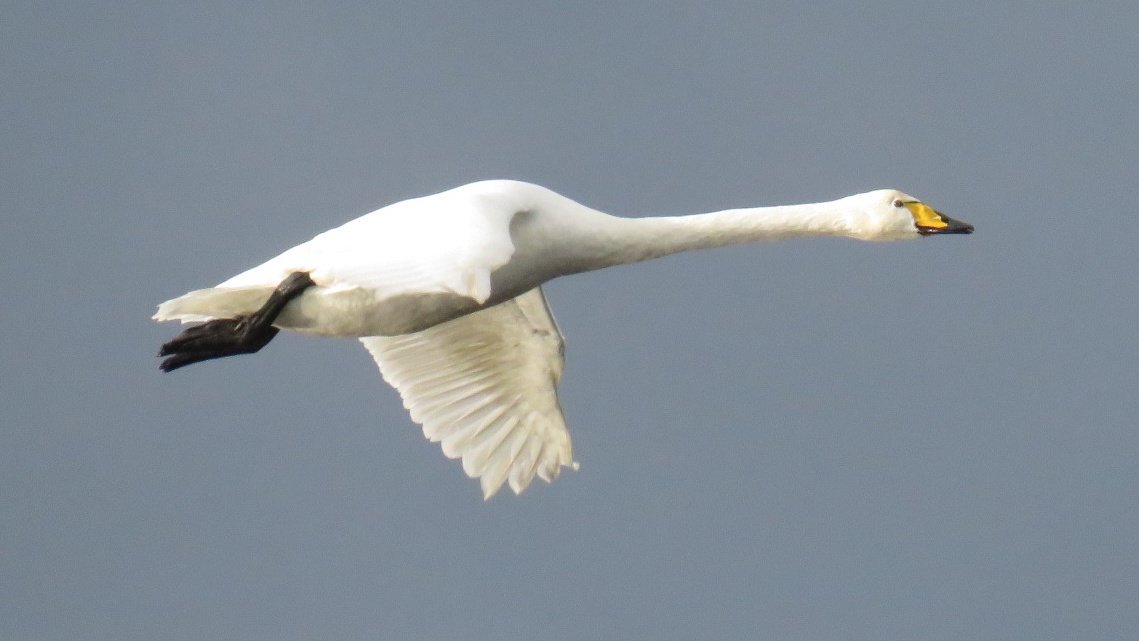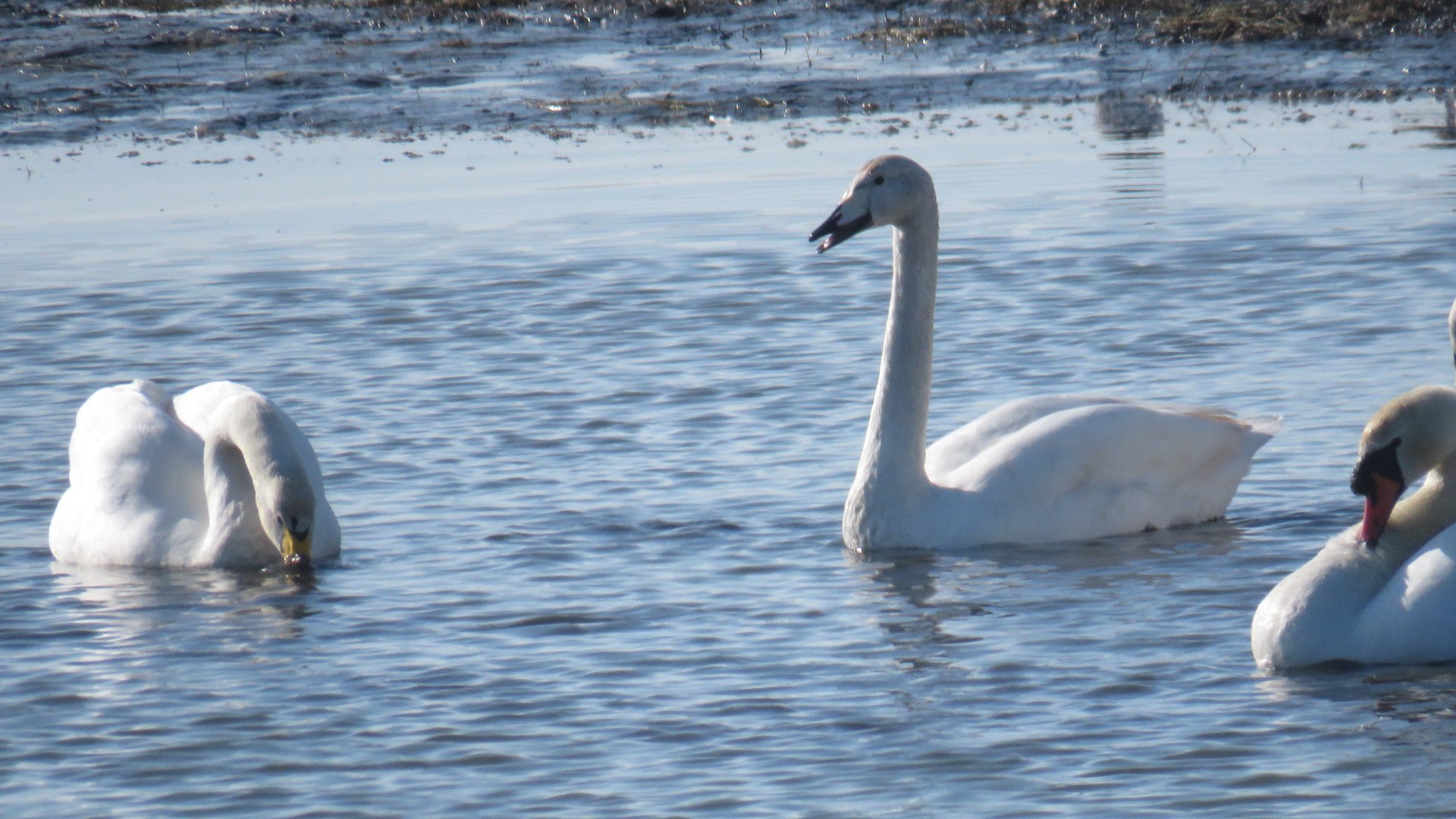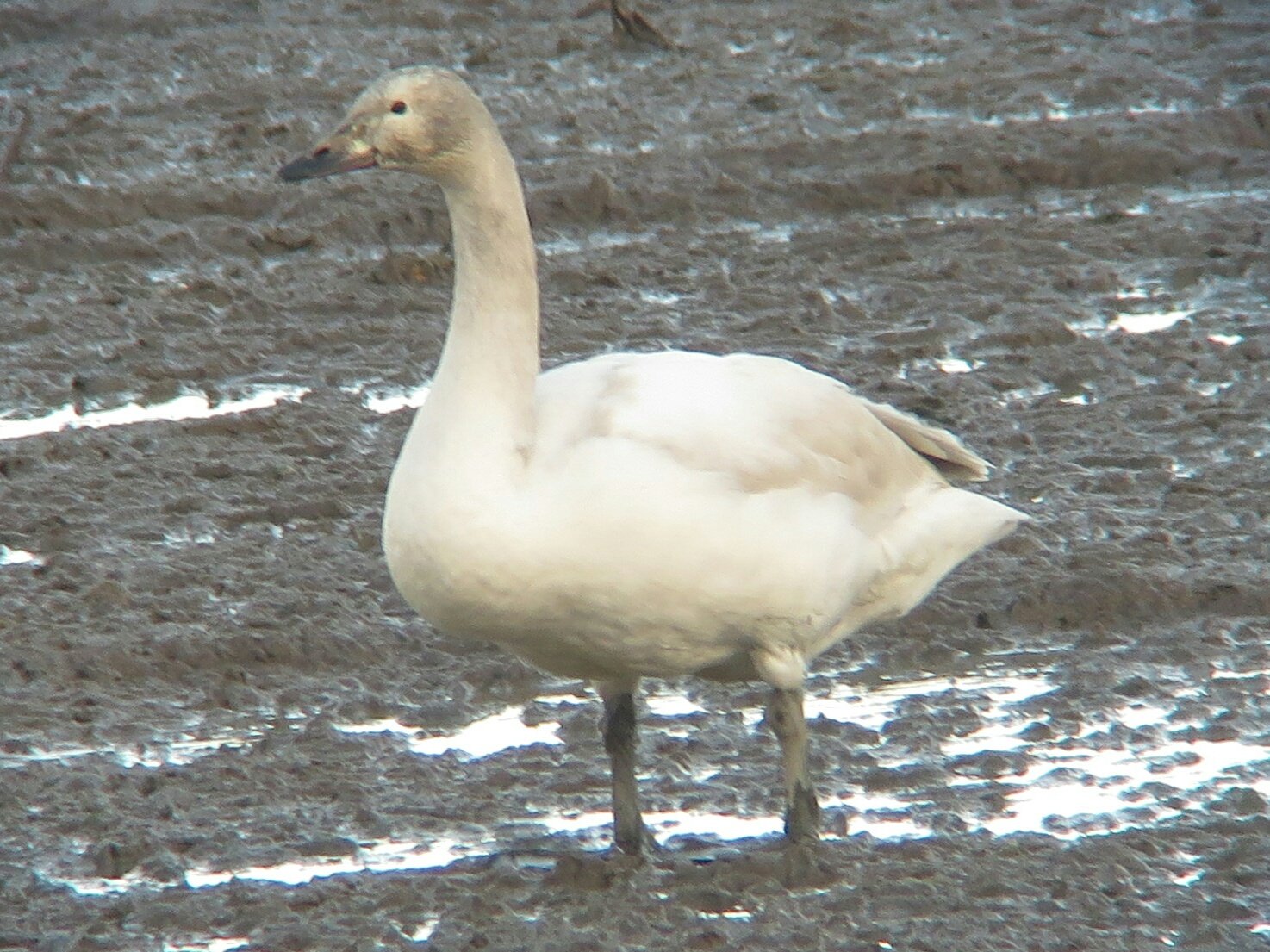Winter Birding- Swan Identification
Winter is a special time for birds and birdwatchers. Thousands of migrates make landfall to Ireland each winter around late October/early November. These include large gatherings of whooper swan which are making their way from Iceland and Northern Europe to spend the winter feeding at many different locations throughout Ireland. While the whooper swans arrive earlier than their counterparts, the bewick's swan tend to be quite a late migrate. Most records refer to birds arriving in late November into mid-December. This is when the challenge of identification becomes a task for birdwatchers.
Whooper vs Bewick's Swan
The identification of whooper and bewick's swan is rather straighforward for the keen eyed birder. Though, for less experienced folk these winter visitors can cause some identification problems. After seeing my first bewick's swan at Kilcoole back in 2011 I was quite suprised at the size and structural differences between the two species. I then began to see bewick's each winter after this. Most being on the Wexford wildfowl reserve were hundreds of whooper swan spend the winter. This reserve gives you a great insight into the identification of both species. As they can often be seen feeding side-by-side just below the observation tower. While they feed on the sugar beet that is planted for the wintering wildfowl there.
Even at a long distance these swan species are quite easily distinguishable from their size. The whooper swan is the larger of the species, while the bewick's are more goose like.






Whooper vs Bewick's Swan
The identification of whooper and bewick's swan is rather straighforward for the keen eyed birder. Though, for less experienced folk these winter visitors can cause some identification problems. After seeing my first bewick's swan at Kilcoole back in 2011 I was quite suprised at the size and structural differences between the two species. I then began to see bewick's each winter after this. Most being on the Wexford wildfowl reserve were hundreds of whooper swan spend the winter. This reserve gives you a great insight into the identification of both species. As they can often be seen feeding side-by-side just below the observation tower. While they feed on the sugar beet that is planted for the wintering wildfowl there.
Even at a long distance these swan species are quite easily distinguishable from their size. The whooper swan is the larger of the species, while the bewick's are more goose like.
Whooper swan cygnus cygnus
This elegant wintering species is a common migrate each winter from Iceland and Northern Europe. Flocks can be found widespread throughout the country. Some good sites for finding large numbers of these elegant beasts include; Kilcoole marsh, Co. Wicklow and the Wexford wildfowl reserve Co. Wexford.

Adult whooper cahore marsh Co.Wexford - Cian Cardiff
This image shows a nice side profile of an adult whooper swan. Showing the classic long straighter bill to bewick, yellow extending below the nostrils (Something not found on a bewick), long neck and body.

Adult whooper in flight Cahore marsh Co. Wexford - Cian Cardiff
Adult whooper swan in flight. Classic long projecting neck, more yellow than black on the bill, even noticeable at a distance on a bird in flight.

First-winter (Adult whooper (left) adult mute (right)) Lady's Island Lake Co. Wexford - Cian Cardiff
First-winter whooper swan (Adult whooper and mute also), showing a lighter yellowish colour to the bill (Though again this yellow is more prominent than the black of the bill), grey head, neck and body in the juvenile/First-winter plumage.
Bewick's Swan cygnus columbianus
The Bewick's swan is a species that was once regularly found with whooper flocks across Ireland. Though nowadays this is not the case. This small swan is now becoming increasingly rare year on year. This is mainly down to birds not travelling as far west as they once did. Climate change seems to be playing a big factor in the lose of the Bewick's swan to Ireland. The bewick's swan is also the smallest of the species that occur in Ireland. Some of the best sites for finding these increasingly rare swans include; Wexford wildfowl reserve and the South slob Co. Wexford. Which is the last county in Ireland for the stronghold of this species.

Adult Bewick's on the Wexford wildfowl reserve - Cian Cardiff
Adult Bewick's showing the classic short neck and body compared to whooper, shorter bill with the black of the bill being the more prominent of the areas of colour, yellow is just a small section (This can vary from individual birds, though bewick don't show as much yellow as a whopper), shorter black legs. The head shape is not as sloped as a whooper swan also, these are the range of features that should be taken into account while identifying the bewick's swan.

First-winter Bewick's Wexford wildfowl reserve - Cian Cardiff
Short necked and bodied first-winter, showing the classic grey wash of an immature swan, Muddy bill covering most of the yellowish upper bill, again the black is more prominent, short legs.
Adult whooper (left) with two adult Bewick's (right) - Co. Roscommon - Kevin Collins (Irish birding website)
This image gives a great indication of the size difference in both species. Bewick's are more goose like than swan when seen with other swan species.
Hope this is a useful identification guide, go find some Bewick's this winter. Let's get finding.
#Winterbirding #Irishbirding #BirdGuides #VikingOptical #Wildfowl
